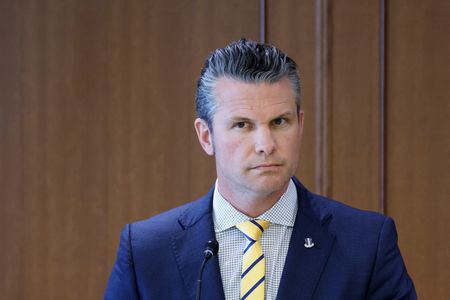By Libby George and Marc Jones
LONDON (Reuters) -Ukraine’s government debt was close to wiping out all the gains made since Donald Trump’s election win on Monday as the prospects for a ceasefire with Russia the U.S. President had said could be brokered in as little as 24 hours, appeared to be fading.
Trump accused Ukrainian President Volodymyr Zelenskiy on Sunday of wanting to back out of a critical minerals deal, while Ukrainian data on Monday had shown the economy grew 2.9% last year, just short of the level needed to trigger a sizable payment to investors.
The country’s bond-like “GDP warrant”, which only pays out when growth hits 3%, plunged almost 4 cents at one point. It later recovered to be down 2.5 cents at 72.34 cents on the dollar. If not for the rebound, it would have been the biggest daily drop since shortly after Russia’s 2022 full-scale invasion.
Two growth-linked 2035 and 2036 bonds, which also make higher ‘step-up’ payments when the economy outperforms, both fell more than 3 cents. That left them at just over 54 cents, back where they were just days after Trump’s November 5 election win.
“It is bad news being priced as bad news,” said Paul McNamara, investment director EM debt at GAM, which sold its Ukraine debt holdings after Trump’s November election win.
“A sell-off makes a lot of sense – if it is going to be peace then it is going to be a bad peace for Ukraine in terms of they are going to get looted (for the minerals).”
Trump had also voiced anger with Russian President Vladimir Putin on Sunday, threatening secondary tariffs on Russian oil buyers if he feels Moscow is blocking his efforts to end the war.
The Kremlin on Monday said it was working with the United States on ideas for a possible peace deal.
Kaan Nazli, an emerging market portfolio manager with Neuberger Berman, which holds Ukraine’s debt, noted that it has been sliding consistently since the Trump call with Putin last month.
“Definitely the market is starting to take the view that the war is here for longer,” Nazli said.
The GDP warrant, a debt instrument linked to Ukraine’s economic growth, was created as a sweetener for investors during the country’s 2015 debt restructuring in the wake of Russia’s annexation of Crimea.
Viktor Szabo, a portfolio manager with Aberdeen, which is invested in Ukraine, said liquidity was low, but the market was repricing a “less positive outcome for Ukraine”, with the biggest declines in the assets that are more sensitive to economic recovery and reconstruction.
The International Monetary Fund on Friday also lowered its growth assumptions for Ukraine’s economy due to a tight labor market and attacks on its energy infrastructure.
Ukrainian bonds returned over 60% last year, but several setbacks to Trump’s proposals for ending the Ukraine conflict have knocked prices, which are now roughly 14-16 cents below the all-time highs hit in February.
Other investors said the prices were not low enough to balance the risks of holding them.
“I suspect, on the other side of peace, when there’s reconstruction, the way to play Ukraine is going to be on the private side, where there’s going to be all sorts of lending opportunities,” said Robert Koenigsberger, chief investment officer with Gramercy.
(Reporting By Libby George, editing by Karin Strohecker, William Maclean and Mark Heinrich)









